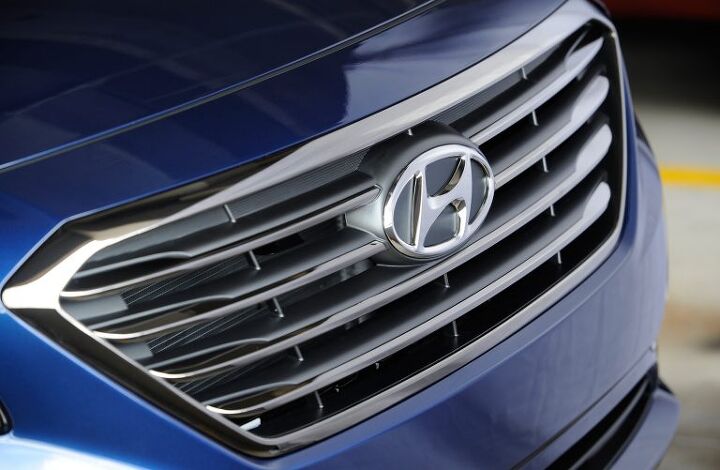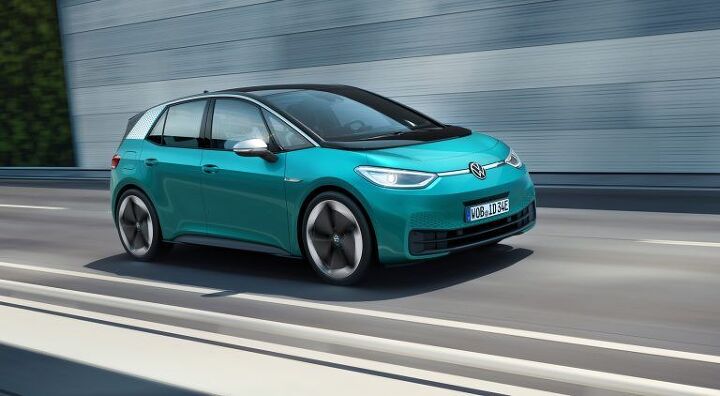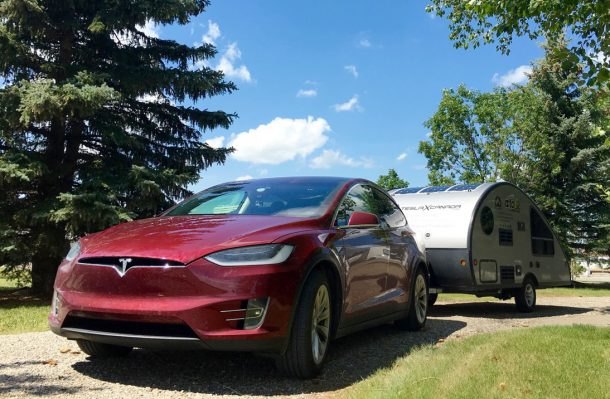#Over-the-airUpdates
Tesla Adding Track Mode to Model S Plaid
While it’s possible to catch a glimpse of a Tesla Model S staging at the local dragstrip, they don’t make many appearances at track days. EVs that weren’t designed specifically for racing circuits typically become undone after a few laps of sustained abuse, with Tesla’s first sedan being no different. Early examples of the Model S even failed to get around the Nürburgring when pushed to the limit, with touring car driver Robb Holland sharing videos of the model forcing itself into limp mode as components began overheating during a test run in 2014. Holland praised the car for its sublime road manners, though concluded it was ill-suited for serious racing.
Things are a little different today. Tesla now holds the fastest single lap of any EV to grace the Nordschleife and sells the Model 3 Performance with a dedicated track mode it plans on extending to Model S Plaid vehicles via an over-the-air (OTA) update. But can some fresh code and a little time really do what’s required to make the sedan a valid track vehicle when the preexisting hardware remains unchanged?
Driving Dystopia: Stellantis Is Becoming a Software Company Like Everyone Else
On Tuesday, Stellantis announced a plan to cultivate €20 billion ($23 billion USD) per year by 2030 via “software-enabled product offerings and subscriptions.” However, the automaker will first need to increase the number of connected vehicles it has sold from 12 million (today) to 34 million by the specified date.
This is something we’ve seen most major manufacturers explore, with some brands firmly committing themselves to monetizing vehicular connectivity through over-the-air (OTA) updates, data mining, and subscription services. Though much of this looks decidedly unappetizing, often representing a clever way for companies to repeatedly charge customers for equipment that’s already been installed.
Opinion: Over the Air Updates Bad, Owning the Car Good
Software updates. Precisely when we had to start having a conversation about software updates – over the air or otherwise – in an automotive context isn’t something I can answer. We didn’t have them for about 100 years. Then, we did. What’s more, it seems like everyone is more or less OK with that, but should they be? Are these software updates really making your car better, or are they slowly throttling back your car’s performance and functionality in a bid to frustrate you into buying a new one?
Let’s take a few minutes to explore the possibilities.
Driving Dystopia: German Automakers Keep Reimagining Vehicle 'Ownership'
Volkswagen recently announced that it plans on making massive amounts of money by introducing more vehicles with over-the-air updates (OTAs), many of which will be able to store and transfer personal profiles so that users can effectively just rent their vehicles for eternity. Additionally, VW has suggested future models will have ability to lock features (that have already been physically installed) behind a paywall that users can unlock via subscription services — things like heated seats, satellite navigation, or even the vehicles top speed.
“In the future, our customers will buy, lease, share or rent cars just for a weekend, and we can use software to provide them with whatever they need over the air,” VW brand’s sales chief Klaus Zellmer said during an online presentation held on Tuesday. “The ID family has been designed for further development, with OTA updates to improve the software’s performance and tailor it to our customers’ needs.”
Report: Hyundai Embracing Subscription-based Features, Buying Boston Dynamics
Following reports that Hyundai Motor Company managed to purchase American engineering and robotics firm Boston Dynamics from Japanese financial conglomerate SoftBank for a cool $921 million, we’ve learned that the South Korean automaker has also fallen into embracing on-demand features. The trend, which is sweeping through the automotive industry to our dismay, basically involves manufacturers hiding vehicle options behind a subscription paywall instead of just letting you purchase the options you wanted upfront.
That means tomorrow’s car shopper might find themselves buying a vehicle that’s already fully loaded from the factory only find themselves forced to unlock heated seats or an upgraded sound system via monthly payments. In our estimation, the whole concept is ludicrously wasteful, diminishes the private resale values of automobiles, and seems like the kind of corporate nonsense reserved for dystopian fiction novels.
Annoyment Optional: BMW Envisions a Future of Temporary Features
The future’s weird, man. As wireless, over-the-air (OVA) software updates become an increasingly common thing in the auto industry, OEMs have weighed its potential. It opens doors to new ways of doing business. New ways of outfitting cars.
New ownership experiences, too.
Frankly, what BMW wants to pull on its customers would make a good QOTD. Some background, first.
QOTD: Do You Care for Over-the-air?
Connectivity is one of those special buzzwords used across most industries, whether it be for a virtual meeting app, a washing machine, or a car. All companies seem to think we need more of it. Today we want to know — are you a fan of cars that come equipped with over-the-air update connectivity?
Confirmed: Ford Mach-E Will Support Over-the-air Updates
Over-the-air (OTA) updates are opening new doors for manufacturers, providing a way to continuously update vehicles after they’ve been purchased. We’ve had mixed feelings on their implementation.
While Tesla has used OTA updates to enhance features on its products, it also sees the technology as a way to rationalize customers paying up front for systems that have failed to manifest. The company has showed a willingness to digitally remove content on vehicles entering the secondhand market — to the chagrin of sellers and those taking possession of a freshly neutered automobile. Meanwhile, Volkswagen has deemed adhering to the launch date of its ID.3 electric hatchback more important than having all the software bugs worked out — with the assumption being that they’ll just be fixed later.
Our cursory assessment on over-the-air updates has been that they seem to possess countless opportunities for the industry to innovate and/or take advantage of customers. And it’s the main reason we’re not celebrating Ford’s recent announcement that the Mach-E will be equipped to receive OTA updates quite as loudly as other outlets.
Tesla Clearly Confused About Secondhand Vehicle Sales
Last month we covered an alarming trend where Tesla appeared to be intentionally removing features from vehicles as they entered the secondhand market. Used automobiles are typically sold with their original equipment intact. The previous owner may have wanted to yank out the tape deck or remove the fuzzy steering wheel cover before handing it over, but these are things you probably negotiated before any money changed hands. Unfortunately, things have only grown more complicated in the (post)modern era.
Reports have rolled in of Tesla stripping cars of thousands of dollars worth of features (mainly Autopilot and Ludicrous Mode) simply because they’re in line for a new owner. This sets an ugly precedent for the industry and undermines the time-honored tradition of the private sale. However, there seems to be some amount of confusion surrounding the company’s official policy and its behavior.
A Buyer's Dismay: Tesla Reportedly Removes Features From Used Model S
I’m a broken record when it comes to consumer protections. Environmentalism may be more fashionable but the green movement has already amassed a sizable army in the current year. Someone needs to be watching out for Joe Customer because companies are stepping up their game. While we’ve often focused on data privacy, right-to-repair laws, and the hidden perils of subscription services, ownership rights also deserve a bit of attention because they’re all sort of interconnected.
As products become increasingly digital, it’s becoming fuzzy as to who actually owns something. In previous decades, someone wanting to outfit their computer with the latest software meant they had to go out and buy it. Now you can simply download stuff over wifi, with no need to have the physical copy cluttering up your desk. But this convenience factor has ramifications. A subset of the video-game community is up in arms over backwards compatibility and the ability to truly own their purchases. With games and movies beginning to occupy internal storage almost exclusively, they’ve grown concerned that companies will attempt to force them to repurchase old games on new platforms to turn a quick buck.
Why is this being explained to you on a car website? Because the automotive industry may be about to engage in similar practices. Jalopnik recently published an account of a man buying a secondhand Tesla Model S, only to see it stripped of thousands of dollars in features.
Ford's Adding Over-the-air Updates, Bigger Screens, More Connectivity
The days of owning an automobile that’s not perpetually connected to various digital networks are quickly coming to a close. On Wednesday, Ford announced most of its redesigned vehicles in the U.S. with have over-the-air update capability after 2020. The automaker is framing this as a way to “repair” your vehicle at home and offer new features after a model has already been purchased.
“Nobody wants to feel like they’re missing out on great features right after spending their hard-earned money on a new vehicle — that’s where our over-the-air updates can help,” said Don Butler, executive director of Ford’s connected services. “We can now help improve your vehicle’s capability, quality and overall driving experience while you’re sleeping.”
While the prospects of giving auto manufacturers remote access to your car are vast, it’s also a double-edged sword. Over-the-air updates would undoubtedly save you a trip to the service center in the event of a code-based recall but it also opens vehicle’s up to privacy concerns and gives automakers new avenues for business.
Tesla Software Version 10.0 Delivers (Potentially Alarming) New Autopilot Feature, Music, Movies, Video Games
Tesla owners who purchased Full Self-Driving Capability or Enhanced Autopilot from the company will soon be able to enjoy new self-driving functions. Software Version 10.0 is officially out for the Model X, S, and 3 — adding new driver assistance features, navigation settings, multimedia libraries (music, movies, video games), security options, and a new karaoke mode.
Since the enhanced Autopilot features are the most notable by far, let’s begin there. Tesla’s new “Smart Summon” feature enables the vehicle to navigate through a parking lot sans driver, so long as the car is within sight. “It’s the perfect feature to use if you have an overflowing shopping cart, are dealing with a fussy child, or simply don’t want to walk to your car through the rain,” Tesla said in its Version 10 announcement.
However, the automaker noted that customers remain responsible for their vehicle’s actions and should be aware of the car and its surroundings at all times. If you didn’t purchase Enhanced Autopilot or Full Self-Driving Capability, then there’s nothing to worry about. Smart Summon is only available if you’ve already bought into one of Tesla’s advanced driving suites. Version 10.0 does come with updates for everyone, though.
Volkswagen Golf Delay Attributed to Software Glitches, Internet Connectivity
Earlier this year, Volkswagen announced that the launch of the Mk8 Golf would be delayed until 2020 as it continues working on the vehicle’s upgraded tech features. VW intends to launch the car with an entirely digital cockpit, even on base models, alongside perks like permanent internet connectivity and advanced driving aids. It’s all part of a bid to make the Golf even more appetizing when compared to upscale rivals than it already is.
At the time, VW said certain technical issues needed to be ironed out before the next-gen Golf was ready to hit the road, but was adamant that software gremlins were not to blame. The issue came down to the advanced nature of the new technologies, not glitches.
Never take an automaker’s word for it.
Tesla's Latest Update Killed Some Vehicles' Autopilot
Tesla’s latest over-the-air update appears to have caused at least a few drivers to lose all Autopilot functionality. While the vehicles seem otherwise intact, the semi-autonomous driving mode that was supposed to be improved by the latest firmware installation ended up a little buggy. That’s unfortunate for Tesla — a company that could do without additional bad publicity.
Luckily, minor software issues are exactly that — minor. This isn’t on the same scale as Tesla’s CEO promising to go public or pretending to smoke weed online. It isn’t even as big of a deal as the company losing another high-ranking executive, which also happened this week.
Elon Musk Pitches 'Party & Camper Mode' for Tesla Vehicles as Possible Dog Whistle to Swingers
Complain about Tesla Motors’ hype machine all you like; it’s still an innovative company. Unfortunately, it has painted itself into a bit of a corner as a result. Still lacking the production might of its much larger competitors, it continues to brand itself as an upstart as it works on improving volume. That means its CEO, Elon Musk, has to continue coming up with new ideas and gimmicks to keep the public impressed.
This week, he came up with a special vehicle mode that would improve the vehicle’s usability while parked. But we can’t exactly tell if it’s a good idea or a bunch of meaningless fluff. Dubbed by Musk as “ party & camper mode,” the setting would allow drivers to maintain in-car airflow, regulate the temperature, play music, charge devices, and have access to lighting for up to 48 hours.
There’s no timeline for the feature, but it would likely be done through via over-the-air updates, meaning it could be applied to every Tesla vehicle currently on the road.



























Recent Comments